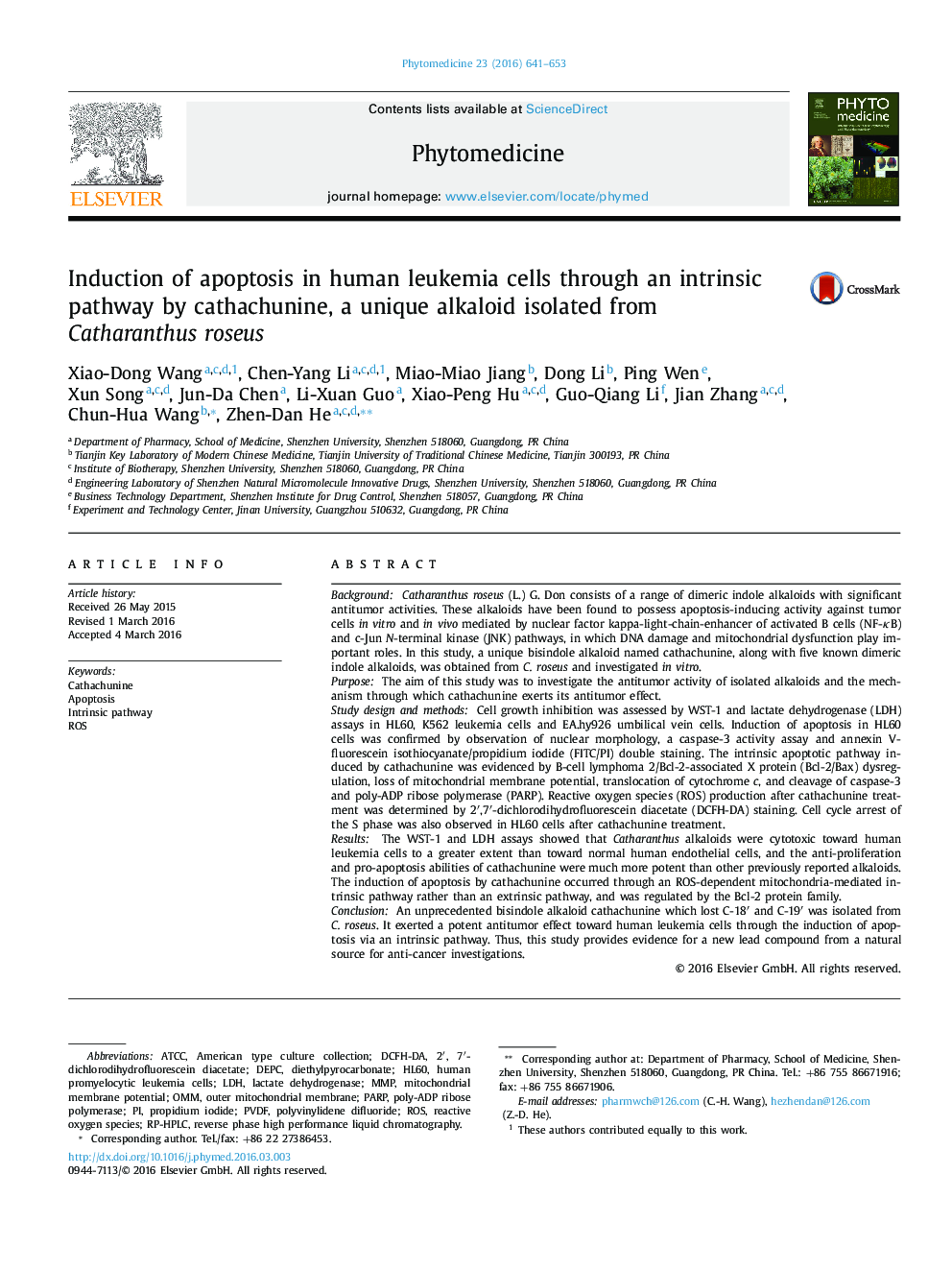| کد مقاله | کد نشریه | سال انتشار | مقاله انگلیسی | نسخه تمام متن |
|---|---|---|---|---|
| 2496228 | 1116115 | 2016 | 13 صفحه PDF | دانلود رایگان |
BackgroundCatharanthus roseus (L.) G. Don consists of a range of dimeric indole alkaloids with significant antitumor activities. These alkaloids have been found to possess apoptosis-inducing activity against tumor cells in vitro and in vivo mediated by nuclear factor kappa-light-chain-enhancer of activated B cells (NF-κB) and c-Jun N-terminal kinase (JNK) pathways, in which DNA damage and mitochondrial dysfunction play important roles. In this study, a unique bisindole alkaloid named cathachunine, along with five known dimeric indole alkaloids, was obtained from C. roseus and investigated in vitro.PurposeThe aim of this study was to investigate the antitumor activity of isolated alkaloids and the mechanism through which cathachunine exerts its antitumor effect.Study design and methodsCell growth inhibition was assessed by WST-1 and lactate dehydrogenase (LDH) assays in HL60, K562 leukemia cells and EA.hy926 umbilical vein cells. Induction of apoptosis in HL60 cells was confirmed by observation of nuclear morphology, a caspase-3 activity assay and annexin V-fluorescein isothiocyanate/propidium iodide (FITC/PI) double staining. The intrinsic apoptotic pathway induced by cathachunine was evidenced by B-cell lymphoma 2/Bcl-2-associated X protein (Bcl-2/Bax) dysregulation, loss of mitochondrial membrane potential, translocation of cytochrome c, and cleavage of caspase-3 and poly-ADP ribose polymerase (PARP). Reactive oxygen species (ROS) production after cathachunine treatment was determined by 2′,7′-dichlorodihydrofluorescein diacetate (DCFH-DA) staining. Cell cycle arrest of the S phase was also observed in HL60 cells after cathachunine treatment.ResultsThe WST-1 and LDH assays showed that Catharanthus alkaloids were cytotoxic toward human leukemia cells to a greater extent than toward normal human endothelial cells, and the anti-proliferation and pro-apoptosis abilities of cathachunine were much more potent than other previously reported alkaloids. The induction of apoptosis by cathachunine occurred through an ROS-dependent mitochondria-mediated intrinsic pathway rather than an extrinsic pathway, and was regulated by the Bcl-2 protein family.ConclusionAn unprecedented bisindole alkaloid cathachunine which lost C-18′ and C-19′ was isolated from C. roseus. It exerted a potent antitumor effect toward human leukemia cells through the induction of apoptosis via an intrinsic pathway. Thus, this study provides evidence for a new lead compound from a natural source for anti-cancer investigations.
Figure optionsDownload high-quality image (145 K)Download as PowerPoint slide
Journal: Phytomedicine - Volume 23, Issue 6, 1 June 2016, Pages 641–653
